In recent weeks, a crew of staffers from a company called Charm Industrial have been working on the edge of Kansas corn fields, moving rolled bales of stalks, leaves, husks, and tassels up to a white semi-trailer.
Inside, a contraption called a pyrolyzer uses high temperatures in the absence of oxygen to break down the plant material into a mix of biochar and bio-oil. The former will eventually go back into fields, adding carbon and nutrients to the soil.
But the company pumps the oil down EPA-regulated deep wells used for industrial waste, or into salt caverns left behind by oil and gas companies. Charm says it solidifies there, locking away carbon for thousands to millions of years that would otherwise go back into the air as farmers burn crop remains or leave them to rot.
Companies like Microsoft, Shopify, and Stripe pay Charm $600 for every ton of carbon it puts underground, either to offset their own emissions or to help build up an industry that will need to play a critical part in tempering climate change, by pulling huge amounts of greenhouse gas out of the air and storing it away.
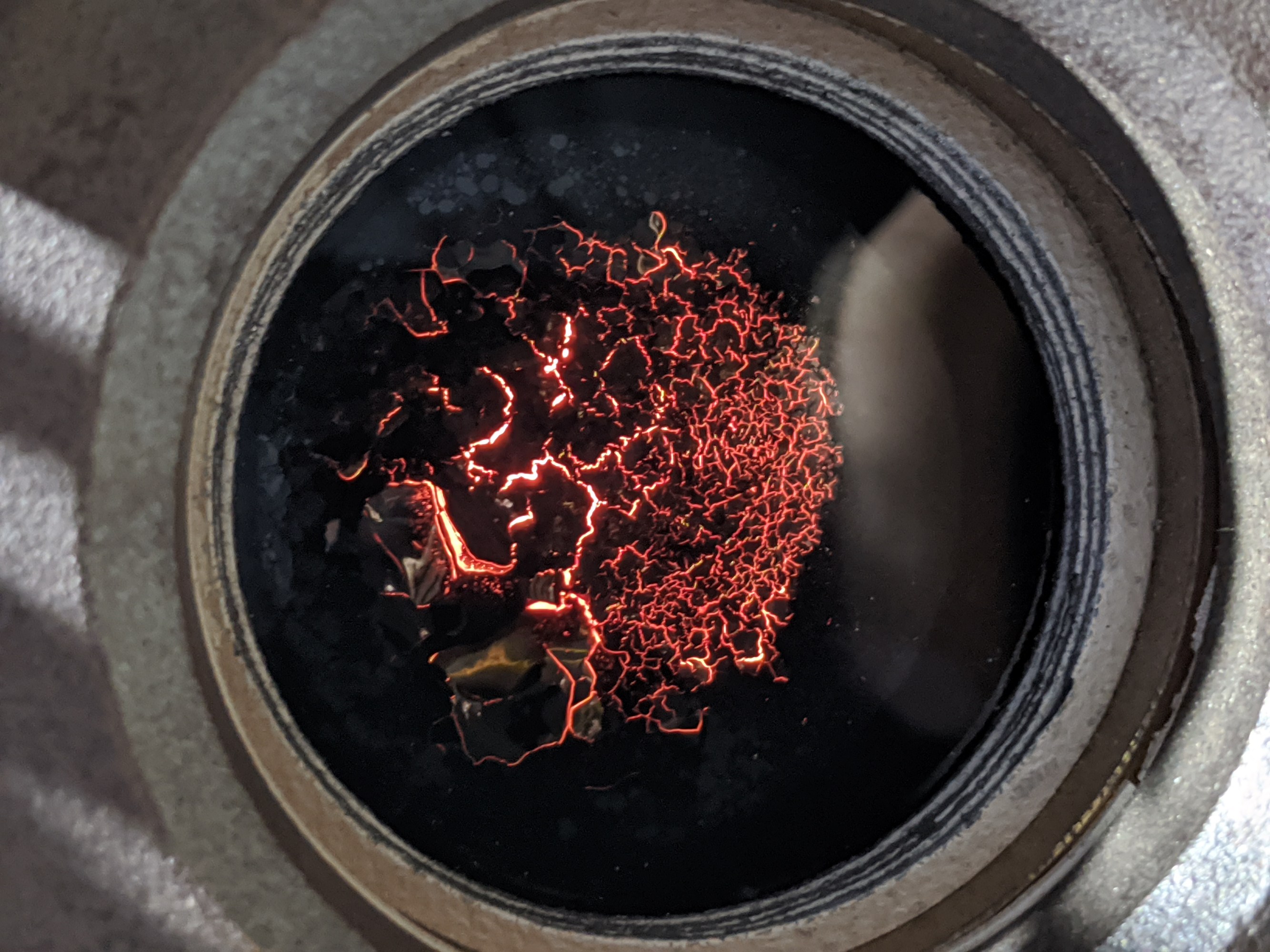

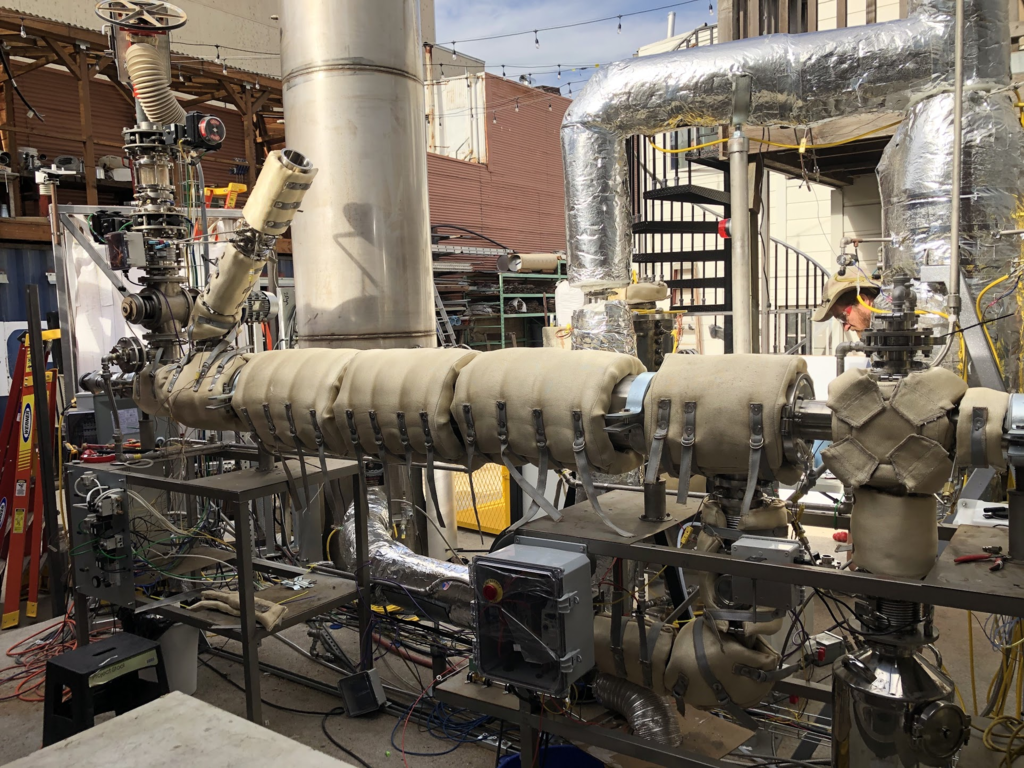
The San Francisco startup has been sequestering carbon this way for the past two years. Late last year, the company announced that the process has safely locked up nearly the equivalent of 5,500 tons of CO2 so far, claiming that’s the largest amount of long-term carbon removal delivered to date. But it’s a tiny sliver of the billions of tons per year that climate scientists warn the world may need to suck up in the coming decades to pull the warming planet back into a safer zone. And there are plenty of questions and concerns about how reliable, scalable, and economical this approach will prove to be.
The company has edged ahead of others mainly because it’s taking a simple approach. It leans on agricultural crops to capture the carbon and uses existing formations for storage. And Charm doesn’t have to construct big projects, sidestepping some of the development, permitting, and capital challenges that startups like Climeworks or Carbon Engineering have encountered as they try to build carbon-sucking factories.
But an early lead in a field that scarcely exists doesn’t necessarily say much about how the company will fare as the market develops. Notably, the next generation of direct-air-capture plants coming online are meant to remove a million tons a year, 180 times more than Charm has achieved so far.
The company will also face some obvious challenges as it scales, including the rising costs of shipping waste between fields and wells, competing demands for the agricultural byproducts it relies on, and questions around how much net carbon its approach ultimately removes.
In addition, the company will face the same risk as other young companies in carbon removal and storage: they’re gambling that large corporations will be willing to continue footing the high bill for cleaning up the atmosphere, and that governments will enact the necessary policies to build up the costly sector.
Corn stalks to carbon credits
Charm’s CEO, Peter Reinhardt, 32, previously led Segment, a customer data software company that Twilio acquired in 2020 for $3.2 billion. He started looking into carbon removal as a way of offsetting Segment’s emissions, initially exploring possibilities like funding rainforest protection.
In 2018, Reinhardt and three others cofounded Charm (a mashup of “char” and “farm”) to build a business around what they saw as a more promising approach. The initial plan was to gasify biomass, a similar process to pyrolysis but done at higher temperatures, to produce biochar and hydrogen. They expected the latter to be the real moneymaker.
But the company found that picking up the biomass and transporting it to a centralized gasification facility was far too expensive, because biomass is “too fluffy.” It’s bulky, heavy, and unwieldy, increasing the cost of handling and moving it—a painful lesson that biofuels companies learned more than a decade ago.
In 2020, Charm’s chief scientist, cofounder Shaun Meehan, had a bright idea: if the company was willing to do what Reinhardt describes as “half-assed gasification,” yielding bio-oil instead of hydrogen, the equipment could fit into the back of a semi-trailer. Then the company could pull right up to farms and carry out the process at the edge of the fields.
Now Charm, which has about 30 employees, pays farmers to allow it to pick up unwanted plant materials left after harvesting. It’s also looking at carrying out the same process with trees and plants removed from forests—say, for fire prevention or in the aftermath of droughts. Separately, the company has begun to explore whether it can use the resulting bio-oil to clean up steel and iron production, the dirtiest industrial sector (see related story).
The business model would make no sense in any other time (and perhaps it doesn’t in this one). But a growing number of companies are willing to pay the high cost of carbon removal and storage as a way of balancing out their own emissions, to help support the emerging market, or as a form of climate philanthropy. So far, around 40 organizations have purchased tons of removal from the company.
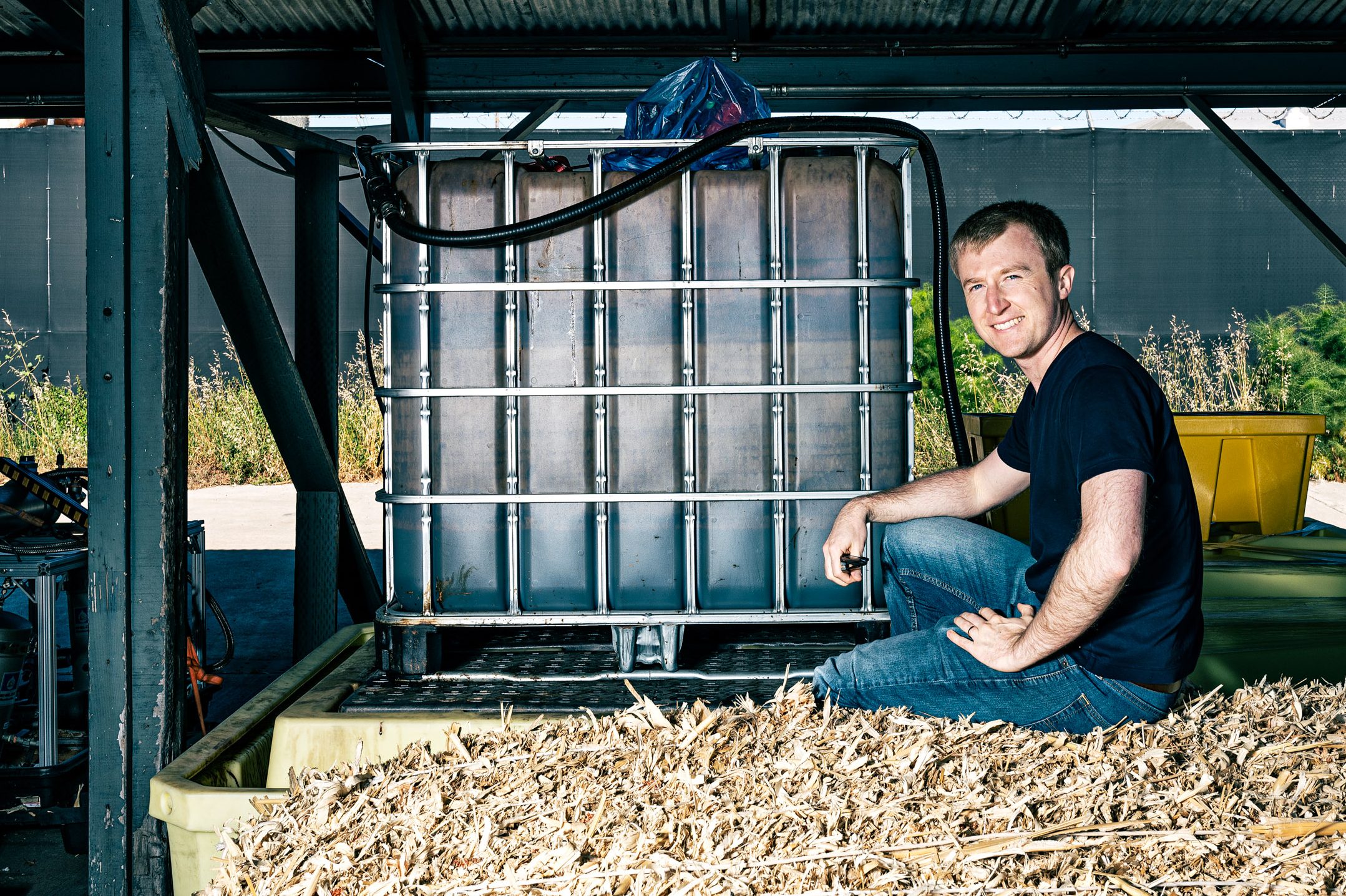
Reinhardt says the company expects to eventually drive down the cost to $50 a ton of removed and stored carbon dioxide as it scales up its operations. For one, it plans to build up a fleet of semi-trailers equipped with high-capacity, fast pyrolyzers developed in-house. Eventually, the company hopes to also create a type of combine harvester with a pyrolyzer unit that can pick up and convert agricultural remains wherever they fall in the fields, saving the costs of collecting, bundling, and moving the material.
Tough economics
Charm’s approach to carbon removal and storage offers several advantages relative to other methods, observers say.
It promises to lock away the carbon for very long periods, while options like planting trees or altering farming methods to hold more carbon in soil can be quickly reversed when trees die or fields are tilled. It prevents emissions that would otherwise occur in many circumstances.
And it can reduce some of the air pollution associated with agricultural burning—which, for instance, California farmers are allowed to do during certain periods to dispose of orchard prunings, trees, weeds, and more.
The company seems to be “serving the market in an innovative way that meets multiple needs through one intervention,” Lauren Gifford, a postdoctoral researcher at the University of Arizona who focuses on carbon offsets and climate governance, said in an email.
CarbonPlan, a San Francisco nonprofit that evaluates the integrity of carbon removal methods, also rates Charm’s described approach highly.
But the company’s carbon accounting and economics could depend a lot on the particular crops or trees in question, and on what farmers or foresters would have done with the plant remains otherwise.
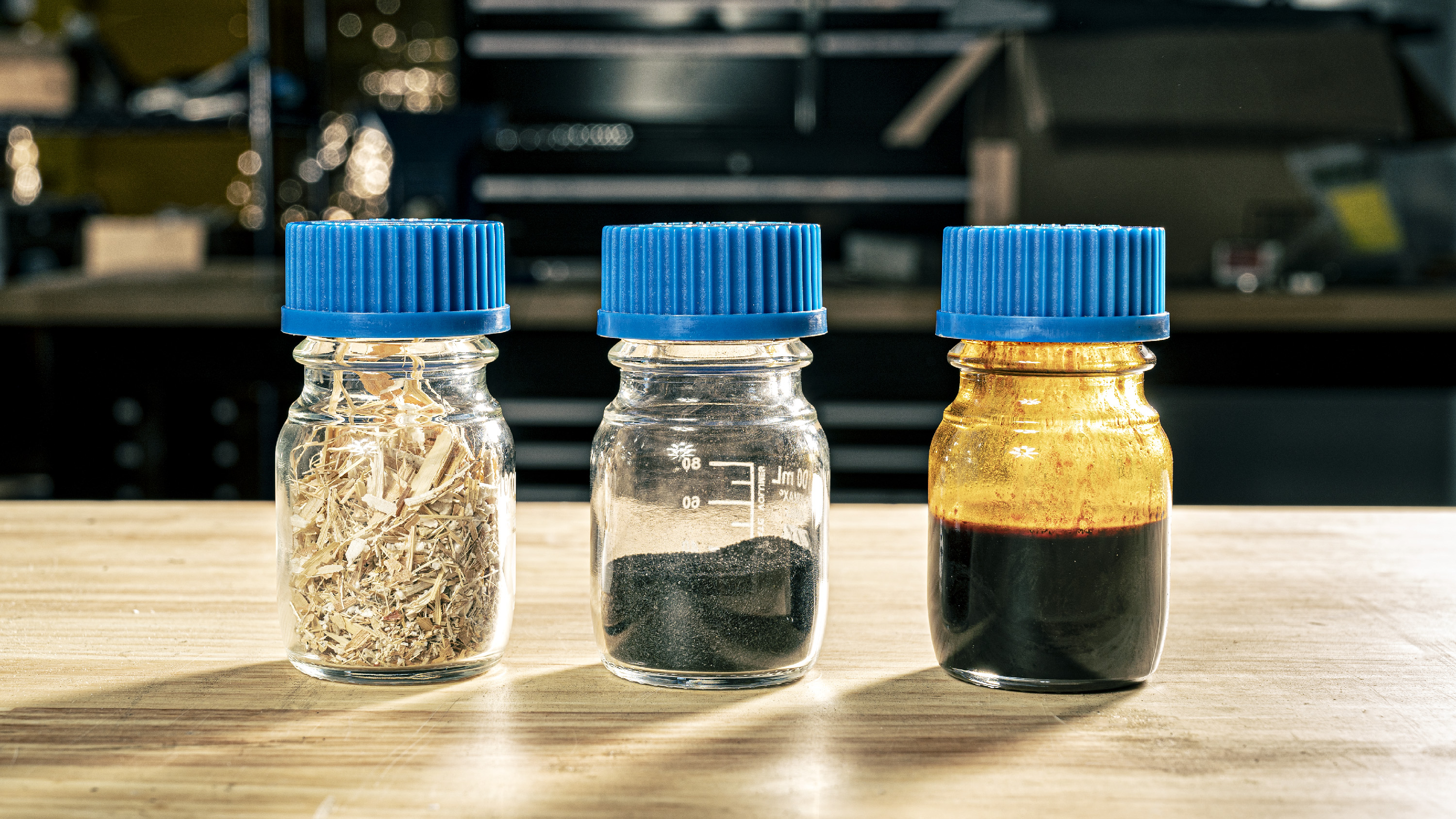
Corn growers, for instance, rely on significant amounts of crop leftovers. They leave it on their fields to prevent erosion and retain water, and plow it under to add nutrients and carbon back to the soil.
The optimal amount to keep is difficult to determine: it depends on the crop rotation, soil conditions, weather patterns, the slope of the field, and other factors. But farmers generally take a conservative approach to avoid the cost of synthetic nutrient additives, says Chad Hart, a professor of economics at Iowa State University.
“They try to leave as much on the ground as possible,” he says.
The leftovers they do bale up are often sold locally as supplemental feed for cattle, or as livestock bedding.
The question is: how scalable will Charm’s approach be over the long term if farmers already use and sell much of this material?
Hart adds that transporting bio-oil between farms mostly in the Great Plains and salt caverns clustered in the South could be a significant expense.
“Will the carbon market structure support that?” he asks.
In addition, growing demand for agricultural remains could push up the price. Other companies are using them to produce fuels or electricity within plants designed to capture any resulting emissions. These include LanzaJet, Mote Hydrogen, and a joint venture between Chevron, Schlumberger New Energy, Microsoft, and Clean Energy Systems.
Well safety
There are also questions around Charm’s reliance on US salt caverns and injection wells, which have repeatedly leaked in the past, despite oversight and regulations.
The bio-oil produced from plant materials has a different chemistry from the petroleum and natural gas currently stored in salt caverns, and years of work might be required to demonstrate that it can be safely and permanently sequestered, says Saeed Salehi, a professor of petroleum and geological engineering at the University of Oklahoma, who focuses on well integrity and geological carbon storage.
“I don’t think we have enough data or established field administration practices to say this will be 100% safe or that we’re fully aware of the whole risks,” he says.
He believes that Charm will also need to go through extended permitting processes with the EPA or other regulators before it can inject large quantities of bio-oil into those caverns.
Reinhardt disputes the transportation concerns, saying there are plenty of US wells or formations that “should be convertible to bio-oil injection,” including many in the Midwest and Great Plains.
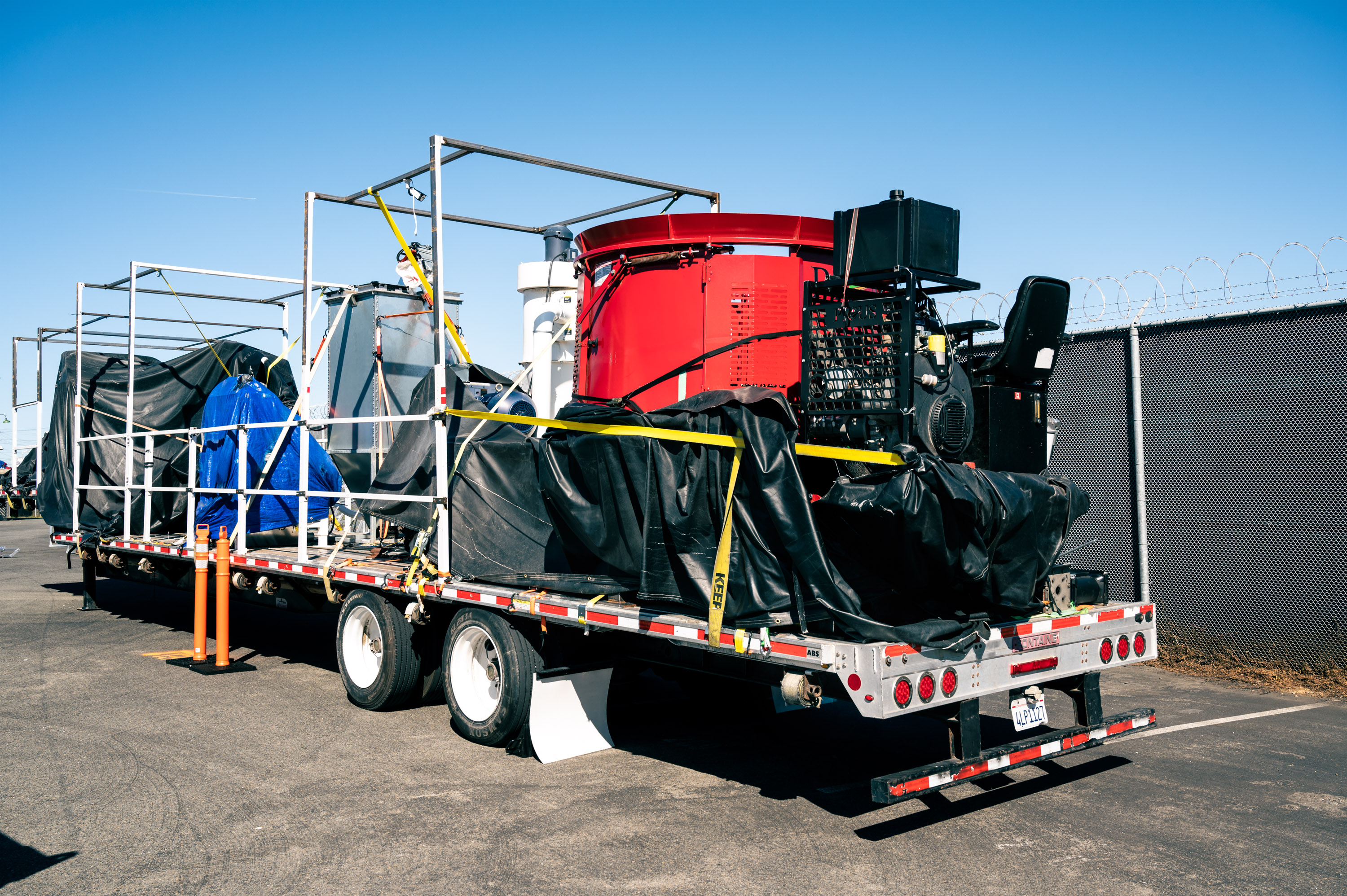
He adds that much of Charm’s technical work to date has been on the carbon sequestration side, including analyses to determine the subsurface chemistry and geology best suited to solidifying and locking away the bio-oil.
But he stresses that bio-oil is a dense fluid that already fits within the regulatory process for the types of wells and caverns Charm has in mind, and that the company is following best practices and EPA requirements to prevent leakage. To help the company “develop the appropriate pathways for safe and permanent injection,” he said in an email, it has hired consultants who’ve permitted, built, and operated injection wells in the past.
“We will of course continue to invest in field measurements, lab measurements, and computational work to always be continuing to improve our understanding of what’s going on in the subsurface,” Reinhardt added.
Carbon accounting
Then there’s the issue of tallying the climate benefits and costs.
How much net carbon the process stores depends on what would otherwise have happened to the plant material. For instance, crops that are plowed under and trees that are turned into timber can also store carbon for certain periods. What’s more, Charm is producing its own emissions—for example, by using diesel to initiate the pyrolysis process and hauling around bio-oil with trucks.
And the math only gets more complicated on larger scales. If Charm and other companies buy up large amounts of corn leftovers, cattle farmers might have to switch to other sources of low-cost feed, including crops grown for that purpose. If the market gets really heated, it could even create economic incentives for farmers to expand their operations.
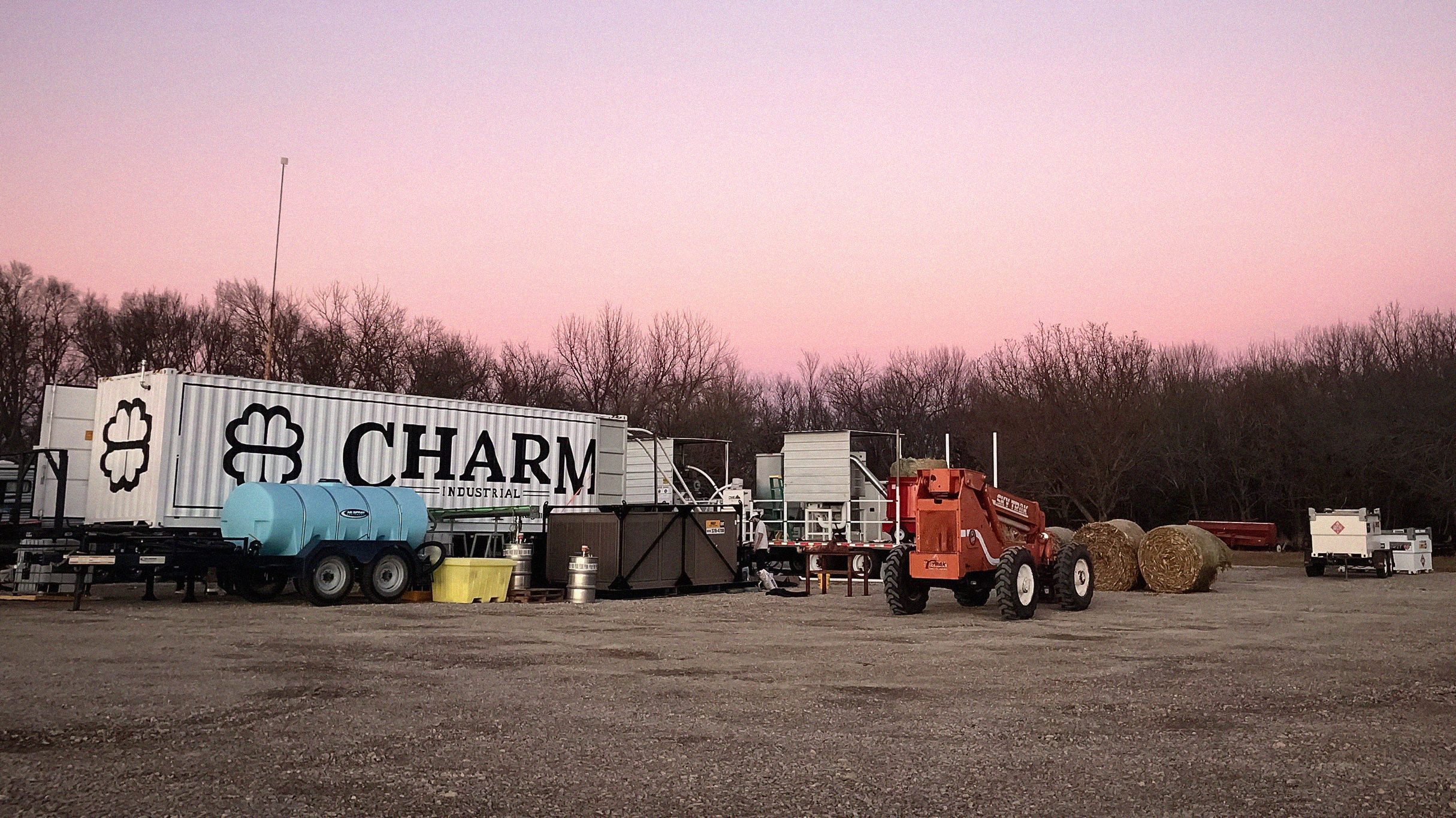
The company would need to account for any emissions released or land converted as a result.
Reinhardt says that Charm will only take half the agriculture material on any given field, and he notes that putting the resulting biochar and ash into the fields will improve soil health. He adds that competing uses of corn remains depend on the region, but that much of it isn’t sold or plowed under, leaving it to rot and release carbon dioxide.
But he stresses that Charm will properly account for alternative uses, land-use changes, and these other factors.
The company’s internal carbon math estimates that when the company is using its own pyrolyzers, the process will generally remove the equivalent of 0.85 tons of carbon dioxide for every ton of biomass. Reinhardt says Charm will improve those figures over time by switching to carbon-neutral syngas instead of diesel to initiate the pyrolysis process, optimizing its pyrolyzers for converting plant matter to bio-oil, and eventually transitioning to electric trucks.
The role of government
Robert Höglund of Marginal Carbon AB, a consulting firm specializing in carbon removal and climate policy, says Charm’s customers are paying a lofty $600 a ton today to help “kick-start” the approach, betting that the company will be able to drive down costs. But he says it’s not clear whether Charm’s method will prove to be among the most effective, scalable, or affordable over time, or the best use of this biomass as the need grows for ever more renewable energy sources.
It’s also unlikely that corporations will continue to buy up enough carbon removal to reach the billions of tons per year that could eventually be required, both to stabilize the planet’s temperatures and to sustain the businesses emerging to pull greenhouse gas out of the air.
In effect, investors and startups are betting that governments will enact laws that subsidize, incentivize, or mandate these practices. Reinhardt, for one, acknowledges that government policy will be crucial for building up the carbon removal markets that will allow his company and others to thrive.
He says Charm is working to educate lawmakers in California and Washington, DC, calling for greater support of the nascent sector as well as rules that are technology neutral while researchers and companies explore a variety of paths.
“Corporate buyers like Microsoft, Stripe, and Shopify will only get to so much scale, and then regulation will need to step in,” Reinhardt said in an email, adding: “So much innovation has happened in the space, and we just need to unlock it.”
